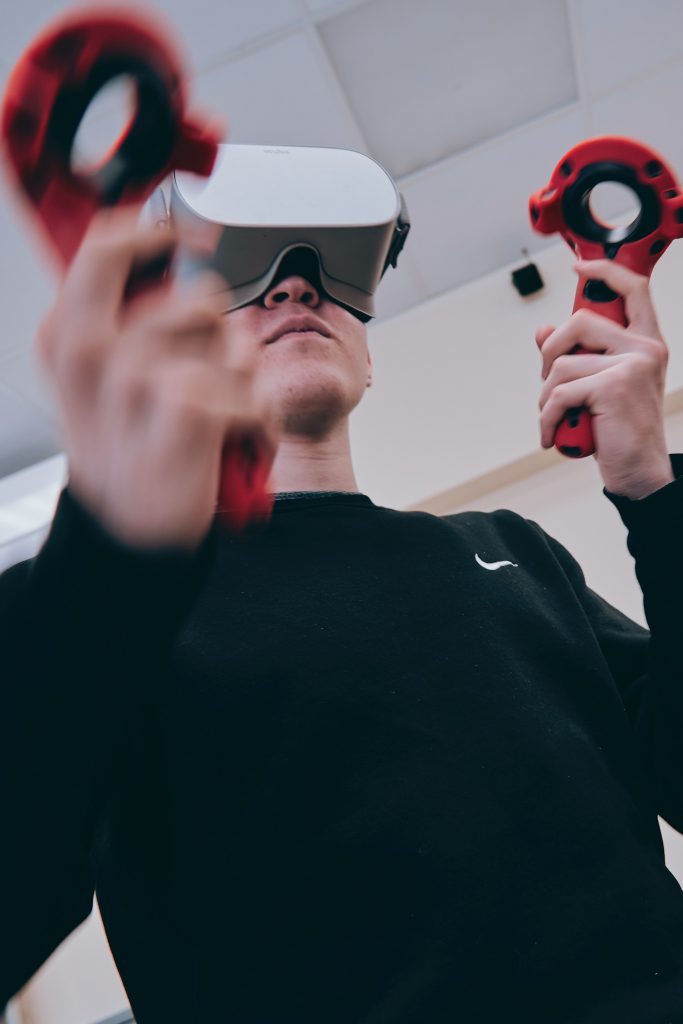Consumers don’t usually consciously think about their process of picking an item off the store shelf but market researchers do. Shelf-tests help researchers better understand that process, particularly when the consumer decision seems arbitrary or illogical. This type of research can solve a number of different research problems including:
- Is the product design noticeable on the shelf?
- Which product design is more noticeable on the shelf?
- Which location on the shelf would make my product the most noticeable?
- Which location on the shelf would increase purchase rates for my product the most? (e.g., I can confirm that letting a retailer put your back-pain reliever on the bottom shelf is a huge mistake!)
- What is the best way to design the shelf in terms of images, sizes, and layout of the shelves themselves?
- How do customers use and search the shelves for that product, particularly in terms of competitive brands, colours, shapes, sizes?
Technology has given researchers numerous ways to conduct shelf tests, each one with specific advantages and disadvantages. Rather than choosing the coolest method using the most up-to-date technology, first think carefully about your research objectives. Then, choose the method that best suits your research objectives. Here are some of your options.
Virtual Reality Shelf Test (VR planograms): VR shelf tests rely on special equipment, notably VR glasses or headsets, worn by research participants. Like a video game, the process immerses people into a simulated store environment where they can visit different sections from aisles to checkout counters. This technology often comes with a hand-held device that allows people to point and click to simulate picking up a product, turning it around to read every side, placing it back on the shelf, or dropping it into their virtual basket.
- Environmental Controls: Variables can be tightly controlled in a VR situation so that every participant experiences the entire research process in an identical way. Test and control groups can be carefully designed and manipulated to meet the precise needs of the research objectives. Researchers can adjust the characteristics of every product from where the product sits on the shelf to the price, colour, size, text, and branding including product options that are not currently available.
- Validity: External validity is a concern for VR shelf tests as people must visit an unfamiliar and perhaps disorienting location that includes none of the noise, distractions, and inconsistencies of a live environment with random people and products. Further, VR technology is still an unusual or gamey type of process for many people that could make the process itself take precedence over the research.
- Sample demographics: VR shelf-tests are currently limited to participants who are local to a central location so they can use the researcher’s device and software. Thus, conducting tests in various regions of a country or around the world is likely not possible. This limits the research to people who are local to a large urban centre and physically capable of attending the location.
- Additional Capabilities: VR shelf tests are perfectly suited to be combined with implicit research methods like eye-tracking and heatmaps. Researchers can precisely determine people’s search and orientation patterns rather than hoping participants can accurately notice and recall what they were looking at after the fact. An added bonus is that these patterns, rather than people, can be video recorded and included in stakeholder briefings and reports allowing them to retrace decision journeys with no concerns about participant privacy.
Online Shelf Test (Planograms): The online shelf test uses images and video segments to show the shelf to participants using a computer or tablet. People use their mouse or touchscreen to move products off the shelf, zoom in on product features, review all sides of products in detail, and return products to the shelf or drop it into their shopping basket.
- Environmental Controls: The researcher can ensure that every participant experiences the entire research process in the exact same way. Test and control groups can be carefully designed and manipulated to meet the precise needs of the research objectives, including adjusting the characteristics of every product from where it sits on the shelf to the price, colour, size, text, brand, etc. However, the researcher cannot control where the participant is or who they are with.
- Validity: External validity is a concern for online shelf tests as people participate from the comfort of their own home rather than dealing with the noise, distractions, and inconsistencies of a live environment affected by random people and products. As such, generalizability could be a concern.
- Sample demographics: Online shelf tests allow researchers to include participants from across the country or around the world, including people from small or remote cities who don’t live near a central location, or people who are unable to attend a central location due to physical limitations or personal commitments.
- Additional Capabilities: Online shelf tests conducted on participant’s electronic devices are perfectly suited to be combined with implicit research methods like eye-tracking and heatmaps. Researchers can use laptop cameras to determine people’s search and orientation patterns rather than hoping participants can accurately notice and recall what they were looking at after the fact. And, these patterns can be video recorded and included in stakeholder briefings and reports allowing them to retrace decision journeys with no concerns of privacy.
Laboratory Shelf Test: Laboratory shelf tests are conducted at a central location, often in a secondary location at a mall or retail outlet. They can also be conducted at dedicated research facilities. With laboratory tests, researchers prepare physical shelving units with real, dummy, or prototype products according to the research plan. Participants are then invited into the room, which may also include dummy aisles or check-out counters, to review the shelf and perform the set tasks.
- Environmental Controls: Variables can be tightly controlled in a laboratory situation so that every participant experiences the entire research process the same way. Test and control groups can be carefully designed and manipulated to meet the precise needs of the research objectives. It is also possible for the researcher to adjust the location and pricing of every product with ease. It is, however, more difficult for the researcher to adjust individual features such as the colour and size of products on the shelf without taking the time and adding the costs of creating additional dummy packaging.
- Validity: External validity is a moderate concern for laboratory shelf tests. In this case, people can physically pick up, manipulate, scrutinize, and smell (now we’re talking reality!) products as they would in a real store setting. And, people usually participate at their preferred retail outlet. However, a laboratory setting is still a less than real setting. Participants won’t have to deal with the noise, distractions, and inconsistencies of a live environment affected by random people and products.
- Sample demographics: Laboratory shelf-tests are limited to participants who can easily travel to a central location. Thus, conducting tests in various regions of a country or around the world is not usually possible and this can affect the generalizability of results to people in other regions.
- Additional Capabilities: Laboratory shelf tests are perfectly suited to be combined with implicit methods like eye-tracking. Researchers can provide participants with eye-tracking equipment to precisely determine their search and orientation patterns rather than hoping participants can accurately notice and recall what they were looking at. Eye-tracking patterns can be video recorded and included in stakeholder briefings and reports allowing them to retrace decision journeys with no concerns of privacy.
In-Field Shelf Test: This type of shelf-test can be handled in several ways. First, a participant may agree to be accompanied and observed on their shopping trip by a researcher who has earlier instructed them on the type of product they are to purchase. Second, a participant may be instructed to purchase a certain type of product and then report their activities to the researcher immediately afterwards. Video evidence may also be used to assist with the process.
- Environmental Controls: In-field shelf tests benefit from the lowest degree of environmental control. Each participant may experience the research process in a completely different way in that competitive products may or may not be on the shelf, products may move around from day to day, and prices may change overnight making it difficult to attribute behaviours to specific causes. It may not be possible to design and manipulate test and control groups according to the precise needs of the research objectives. Further, the researcher cannot change any features of the products or shelf, including placement and pricing, to test out their own hypotheses.
- Validity: In-field shelf tests benefit from the highest degree of validity. Real people visit their preferred retail outlet to purchase products in the real setting. Competitive products come and go from the shelf as they normally would, perhaps even making portions of the research impossible. Other customers come and go as they normally would, perhaps rushing or annoying the participant. These inconsistencies reflect the real purchase situation.
- Sample demographics: In-field shelf-tests are limited to participants who can easily travel to a central location. Thus, conducting tests in various regions of a country or around the world is not usually possible and this can affect the generalizability of results to people in other regions.
- Additional Capabilities: In-field shelf tests are less suited to be combined with implicit methods like eye-tracking and heatmaps. While it is physically possible, it creates a somewhat awkward situation for the participant who may be subject to staring from other customers, and concerns from the retail outlet.
We’d be happy to help you figure out which type of shelf-test would be best suited for your project. Please get in touch with us!



